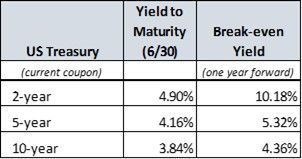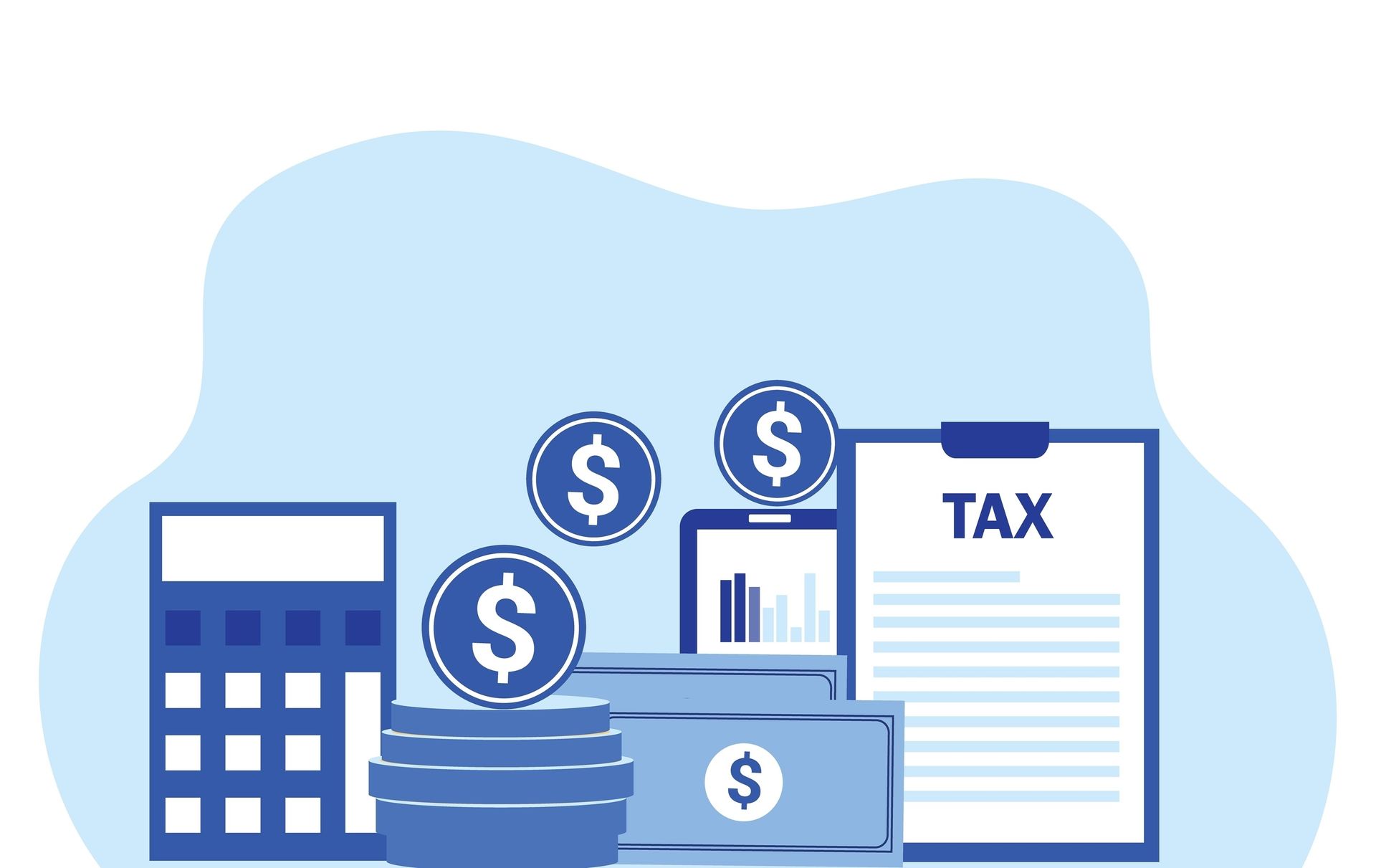Bond Market Update
Interest rates resumed their uptrend in the second quarter after having declined earlier this year. The collapse of two large banks had given hope to investors that the Federal Reserve would refrain from further rate increases and even potentially lower rates. Fed officials feared their past rate increases, together with recent banking industry stresses, would create a sharper than anticipated slowdown. Banks’ potential to tighten credit standards, because of the bank failures, might also lead to reduced lending essentially helping the Fed do its job. However, this did not come to pass as the economy continued to expand and inflation remained well above the Fed’s 2% target level. A tight labor market combined with signs of stronger auto sales and a rebounding housing market influenced the Fed to raise rates in May, for the tenth consecutive time, to a new level of 5-5.25% for the Fed Funds rate. The rate increase campaign paused in June essentially to allow time to see how the previous rate actions would impact the economy. Recent economic numbers indicate higher rates are needed.
The yield curve remains extremely inverted with the two- to 10-year spread at -106 basis points. When short term rates are this much higher than long term rates it implies investors’ preference to lock in long term rates in expectation the Fed will ultimately reduce rates. Yield curve inversions are a precursor of a recession. The timing of the recession is uncertain but is likely to occur sometime later this year or early in 2024.
The rapid increase in interest rates has little historical precedent. The full impact of the Feds actions has not yet worked its way through the economy. When the Fed raised rates in the past, it often lifted them to the point that the job market cracks, plunging he economy into a recession that leads them to quickly reverse course and cut rates. Until this occurs, we can expect the potential for additional rate hikes.
Breakeven Yields
Interest rates have risen at an unprecedented pace. It is instructive to look at how much investors can get hurt from further increases in interest rates. One way to do this is to look at how high yields of different maturities must go in one year for an investor to break even.

The above table shows a two-year bond today purchased at a 4.9% yield to maturity would need to increase to a yield greater than 10.18% in one year for it to result in a negative return. The other maturities are shown above. We do not expect yields to reach these levels. While it has been a difficult period to be invested in bonds, the bulk of losses may already have occurred. As stated above, with the current extreme level of yield curve inversion, a recession can be expected at which time the Fed will reduce rates. While all bond prices will rise as yields decline, the greatest beneficiary will be longer term bonds since their prices are most sensitive to changes in interest rates.
Why it may be an opportune time to extend out on the yield curve…
It may be an opportune time to invest in longer term bonds. An inverted yield curve simply reflects the bond market’s view on the stance of monetary policy. The shorter-maturity part of the yield curve is driven more by the level of, and expected changes in, central bank policy rates. While the level of short rates does influence the longer-maturity part of the curve, those yields are more driven by expectations of economic growth and inflation.
During monetary tightening cycles, the Fed pushes policy rates up to levels that will eventually begin to restrain growth and lower inflation expectations. Additional rate increases would therefore tend to put more upward pressure on shorter-term Treasury yields, while slowing growth/inflation expectations which would keep longer-term yields more stable. Eventually as markets price in a slowdown and subsequent rate cuts, the Treasury curve will reverse the inversion. Consider the following chart:

This chart shows that as yield declines and the yield curve steepens (short rates declining faster than long term rates) the greatest potential return will come from the longer end of the curve. Therefore, while it may appear risky to extend out on the yield curve, when rate cuts do occur, longer maturities will perform best even as their yields decline less. While investors should remain cautious given current inflation trends, a modest pivot to maturity extension may be in order.
As always, if you have questions about the bond market, you can reach us any time at (833) 888-0534 x2 or info@westbranchcapital.com.
The views and information contained in this article and on this website are those of West Branch Capital LLC and are provided for general information. The information herein should not serve as the sole determining factor for making legal, tax, or investment decisions. All information is obtained from sources believed to be reliable, but West Branch Capital LLC does not guarantee its reliability. West Branch Capital LLC is not an attorney, accountant or actuary and does not provide legal, tax, accounting or actuarial advice.
About The Author
James K. Ho
Jim has over thirty years of investment management experience. He is a Managing Director and Principal of the firm. Prior to West Branch Capital, Jim was a fixed income Portfolio Manager at John Hancock Advisors. Previously, he managed the John Hancock Tax Exempt Income Trust. Prior to joining John Hancock Advisors, Jim was a Senior Investment Officer at The New England (MetLife), where he managed multiple bond portfolios, including taxable and tax exempt mutual funds and separate accounts. Jim holds an M.B.A. from Columbia University, New York, as well as an M.S. in Applied Math and B.S. in Applied Math and Economics from the State University of New York at Stony Brook. He is a Chartered Financial Analyst and a member of the Boston Society of Security Analysts.
Recent Articles

Categories




